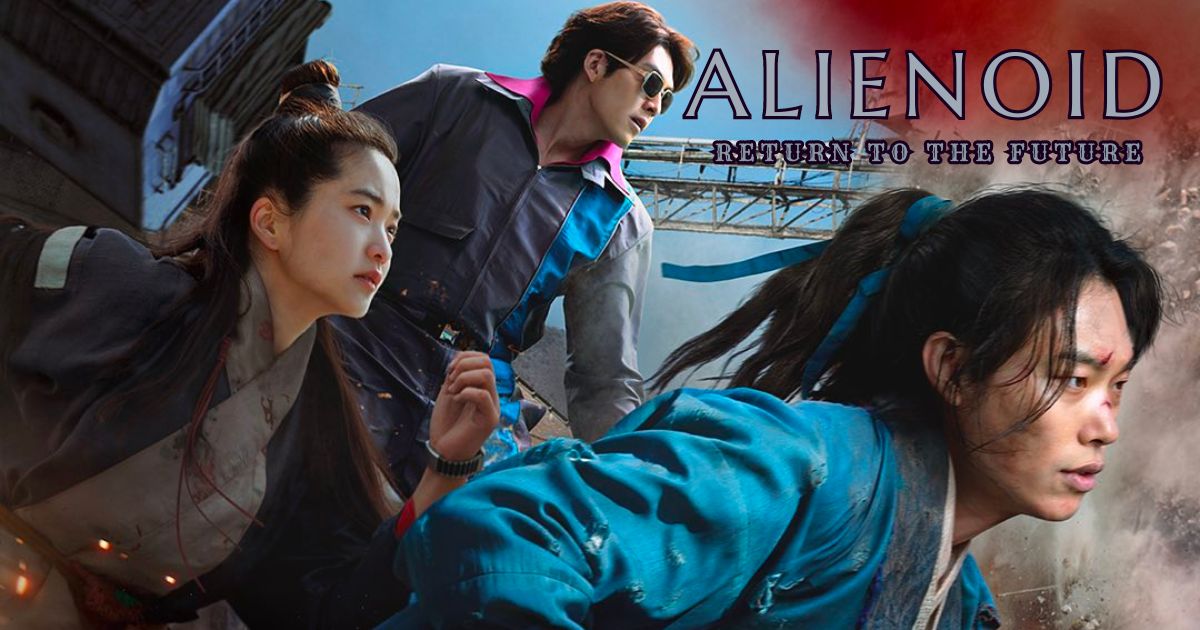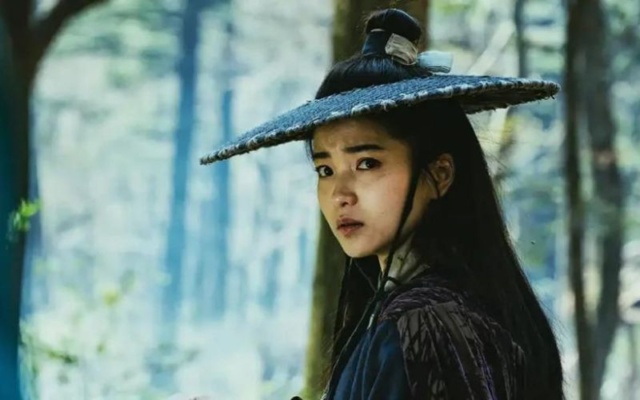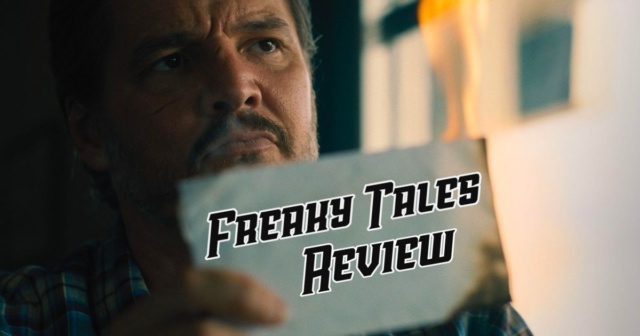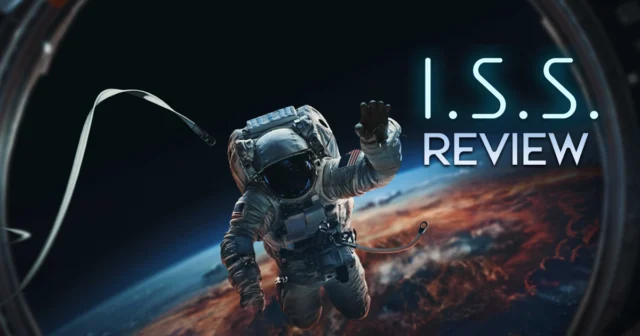Review: ‘Alienoid: Return to the Future’ Changes the Game of Time Travel Movies

Choi Dong-hoon reinvents the language of time travel cinema through his Alienoid series. With its sequel, Alienoid: Return to the Future, now in theaters, the director takes even bigger storytelling, and aesthetic, risks to enthrall viewers.
“Don’t try to understand it. Feel it.” is the core tenet Christopher Nolan attempted to introduce its audiences within his time-travel sci-fi drama Tenet. But this approach can only work if the director fully commits himself to forego large chunks of exposition and explain everything the audience needs to know through a show-stopping display of image and sound making. Tenet is often cited as the perfect example of “vibes movies;” but there are no vibes to a film that consistently bludgeons its audience with interminable, contradictory exposition, to which its actors muffle through oxygen masks and a (far too) loud sound design.
It’s of course, understandable that most audiences will cite Nolan‘s film as a “vibes movie” because that’s the only cinema they expose themselves to, afraid to venture out in the world and overcome the one-inch tall barrier of subtitles. They only overcome it when a hyped movie like Anatomy of a Fall, Godzilla: Minus One, or S.S. Rajamouli‘s RRR gets an overwhelming buzz from Western audiences. Then they stop doing it when no one talks about a specific international film they need to watch.
Not that these aforementioned films are bad, far from it, but if it’s the only time you’re venturing out into the world of international cinema, then you’re depriving yourself of truly audacious pieces of work. This is especially true of the filmography of Choi Dong-hoon and his Alienoid movies, to which no one outside of South Korea is currently talking about.
[Warning: Spoilers from Alienoid and Alienoid: Return to the Future are below!]
Danger comes for the human race in Alienoid: Return to the Future
It is clearly unintentional, but the arrival of Alienoid and its sequel, Alienoid: Return to the Future, act like direct responses to Christopher Nolan‘s Tenet. The plot for the first film and Return to the Future is head-scratchingly incomprehensible. Layers upon layers of exposition and lore get introduced in the dense 142-minute first installment, where extraterrestrial figures, Guard (Kim Woo-bin) and Thunder (Kim Dae-myung) track aliens who are possessing human bodies to contain them in crystal-like contraptions.
One of these aliens is dubbed The Controller, who wants to take over Earth and release a toxic substance called the Haava, so the planet can be habitable for aliens while simultaneously killing the human race. Guard, Thunder, and their adopted daughter, Ean (Kim Tae-ri/Choi Yu-ri), attempt to stop The Controller from releasing the Haava, which causes them to travel back in time and land in 1391 A.D.. It’s there that a Taoist swordsman, Muruk (Ryu Jun-yeol) is looking for a thingamajig called the Divine Blade.
That sounds simple enough, but the film is told in a non-linear timeline, with the film starting in 1380 and then cross-cutting from 1391 to 2022. At first, the narrative doesn’t flow, and none of the introductory parts Dong-hoon establishes in his first installment make a shred of sense: what is the Divine Blade? What in God’s name is the Haava? Why are fifteen different people looking for it in three different timelines?
It’s a total head-scratcher to figure everything out as more moving parts get introduced. It doesn’t take long for you to give up on trying to figure out what the film is showing and instead let yourself be guided through a spiderweb plot that keeps tangling itself. Don’t try to understand it. Feel it.
And once you start doing that, Alienoid then becomes a pure feat of sci-fi filmmaking. It’s an audaciously inspiring, visually striking hybrid of traditional wirework wuxia with a splash of superhero mythmaking; producing some of the most daring images South Korean genre cinema has ever offered with actors at the top of their physical game; giving precisely tactile performances in a series of mind-melting action sequences that your brain can’t physically process. It’s one hell of a wild ride that I would hope audiences would be curious enough to seek out and discover on their own. There’s so much more to offer than the facile tenets of Christopher Nolan‘s time travel movie.
A cinematic experience that defies description from Choi Dong-hoon
Alienoid: Return to the Future takes the galaxy-brained approach Dong-hoon adopted in the first, and cranks it to eleven. The film directly picks up after the events of the first left off, where it was revealed that Muruk is the conduit for The Controller. Muruk and Ean must find the Divine Blade to travel back to 2022 and find Thunder to extract The Controller from him.
That’s about the gist of the movie. It immediately begins to over-complicate itself by giving Min Gae-in (Lee Hanee) a bigger role in the sequel through the 2022 timeline, discovering the Haava and her ancestors’ roots. But Muruk and Ean’s connections may be far deeper than they think.

Again, describing the plot is futile. Dong-hoon’s world is too dense to attempt to talk about, and figuring out everything from the get-go will be the worst mistake you can make instead of letting it all in naturally. Because amidst its ever-changing plot and aesthetic, everything in Alienoid: Return to the Future begins to make sense as its narrative clears up within a second-act twist. This turns the entire direction of the plot on its head and deconstructs every possible notion of time travel filmmaking that the genre established throughout the years.
Yes, Dong-hoon checks several boxes and has fun with classic tropes. Such as, when the Twin Peaks sorcerers (Yum Jung-ah and Jo Woo-jin) land in 2022 at a gym and see an alien on a treadmill television. The two attempt to destroy it with deadlifts, as they run on a treadmill, not knowing what it is or how it can be stopped. This scene is as funny as when Ean gave the middle finger to guards in the first film, whose reaction was to look up in the sky. These examples are the most clear-cut way in which Dong-hoon works, blending classic tropes with contemporary sensibilities, resulting in a movie that keeps impressing through its derring-do and exhilarating kinetics.
Consider the sequence where Muruk is kidnapped by the sorcerers at the beginning of the film, using his fan to fly off the building and into the horizon. It’s a simple, gravity-defying moment that lets us know how traditional its action is steeped in, heavily inspired by the work of King Hu and Tsui Hark. But the movie immediately flips this notion to its head by integrating guns in its period setting. Ean uses them frequently to get out of tricky situations, such as the moment she shoots an alien’s tentacle to be unstuck by it, leading to Nong-pa (Jin Seong-kyu) saving her with his sword.
There’s always a blend between the old and new, making each set piece feel vivid. There’s a wide array of striking images and elaborate movements on display. Such as the orange haze of the Haava filling the air as soldiers attempt (and fail) to capture an alien, the dark blue hue filling action set pieces set at night. In addition, there’s some of the most dynamic use of CGI I’ve seen in some time through a highly elaborate train crash, and an Avengers: Endgame-like level climax that sees each hero assemble to give The Controller the ass-whooping he deserves.
Again, it’s incredibly hard to describe. Each action set piece is precisely physical, which few modern Hollywood films highlight. Beyond the John Wick and Extraction films, modern blockbuster filmmakers have forgotten the balletic quality of an action scene and the physical performance an actor can bring to their role.
Most of our understanding of Alienoid: Return to the Future is felt through the action. Each movement the actors make within their respective environments gives us a deeper understanding of who they are in the lore Dong-hoon creates. This allows us to attach ourselves to them as they perform feats of wonder that teeter on the edge of comedic, but always exhilarating to witness.
Consider the scene where Min stops a petty thief near the film’s beginning: the scene’s rhythm is punctuated by its perfectly toned score from Jang Young-gyu, while Min’s martial arts are as equally comedic as they are effective. At first, the sequence is funny enough, but it doesn’t take long for her to gain the upper hand and work her way into defeating him, which the police have failed to do. Again, it’s a small bit, but tells you everything you need to know about the character and Dong-hoon‘s modus operandi.
Final thoughts on Choi Dong-hoon’s Alienoid: Return to the Future
As such, when every character travels back to 2022, and the climax kicks into gear, figuring out what Alienoid: Return to the Future is about seems completely unimportant. It doesn’t matter. None of it does. Dong-hoon gives us enough material for us to feel it, as opposed to understanding it. We’re quasi-forced to be enraptured by the calculated physicality on display and its striking, evocative images.
Choi Dong-hoon doesn’t ask anything of its audience. He just wants us to go along for the ride through a dense and incredibly rich world that opens up as it begins to deconstruct every rule (and tired clichés) that the time-travel genre is currently sleepwalking in.
Minus Tenet, which has attempted (but failed) to bring something new to the genre, time travel movies are completely washed. They would rather copy Back to the Future than even attempt something new, always rehashing the same tropes so the audience can point at the screen instead of drawing an intellectual exercise that is both visually stimulating and participative.
Alienoid: Return to the Future turns classic time travel tropes on their head in an attempt to breathe new life into a stale genre and finally give justice to the “Don’t try to understand it. Feel it.” tenet. It doesn’t work if you’re consistently explaining to audiences what’s happening, but it’s absolutely going to work if you let the film guide audiences. In Alienoid, the plot (almost) doesn’t matter. You will understand everything down the line. The only thing required of you is to open your eyes and let yourself go.
My rating for this film
★★★★★ / ♥♥♥♥♥
Alienoid: Return to the Future is hitting select theaters now. Do you plan to seek out this new film in theaters soon? Let us know your thoughts on social media @mycosmiccircus or The Cosmic Circus Discord!
Ranking All The Live-Action Toho Godzilla Movies
Freaky Tales Review: Genre Extravaganza Pays Tribute To 1987 Oakland
Review: Claustrophobia Meets the Cosmos in Thrilling New Film I.S.S.





